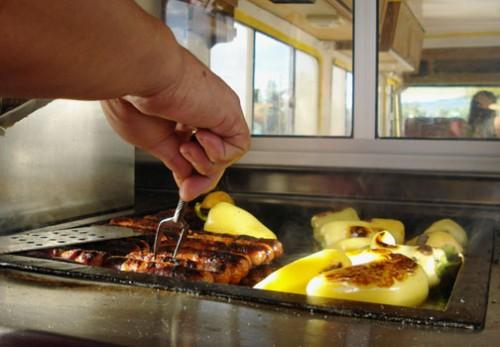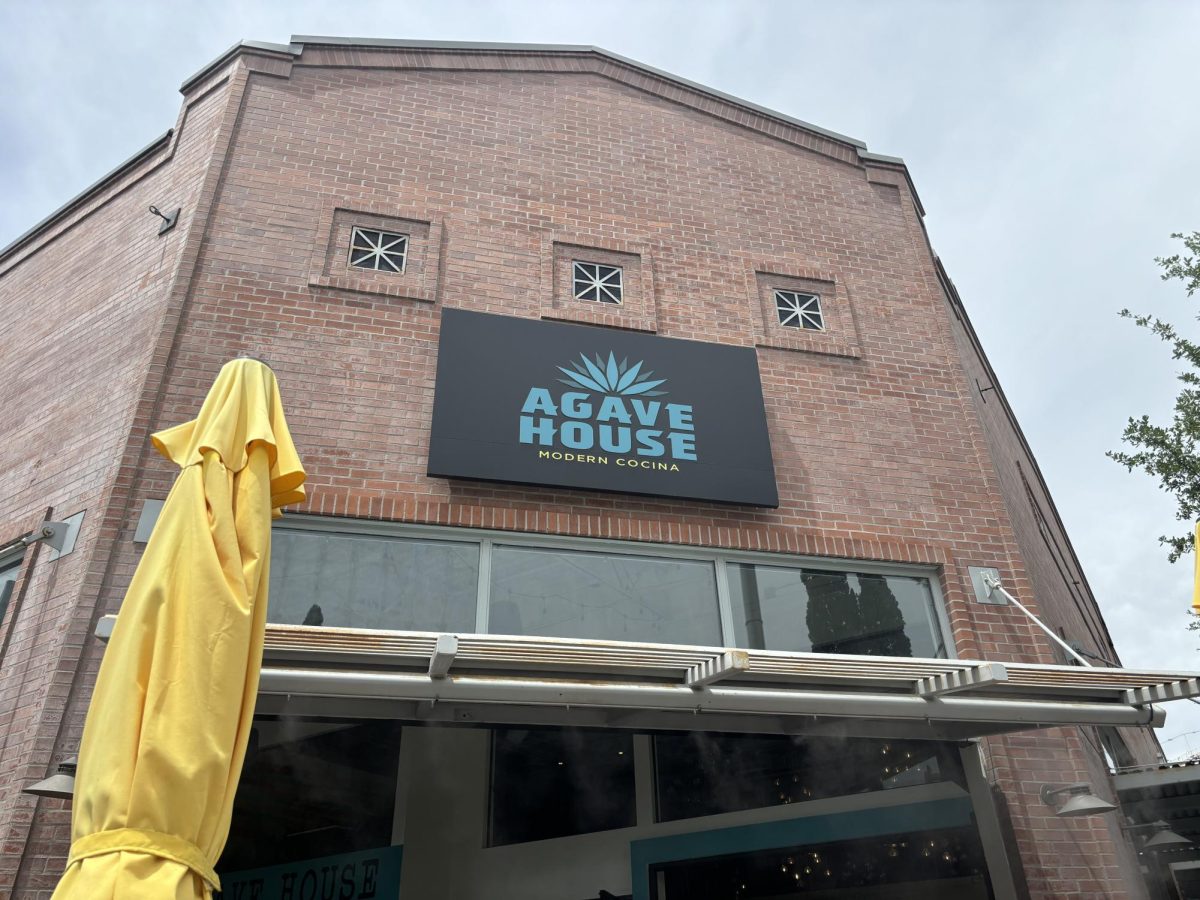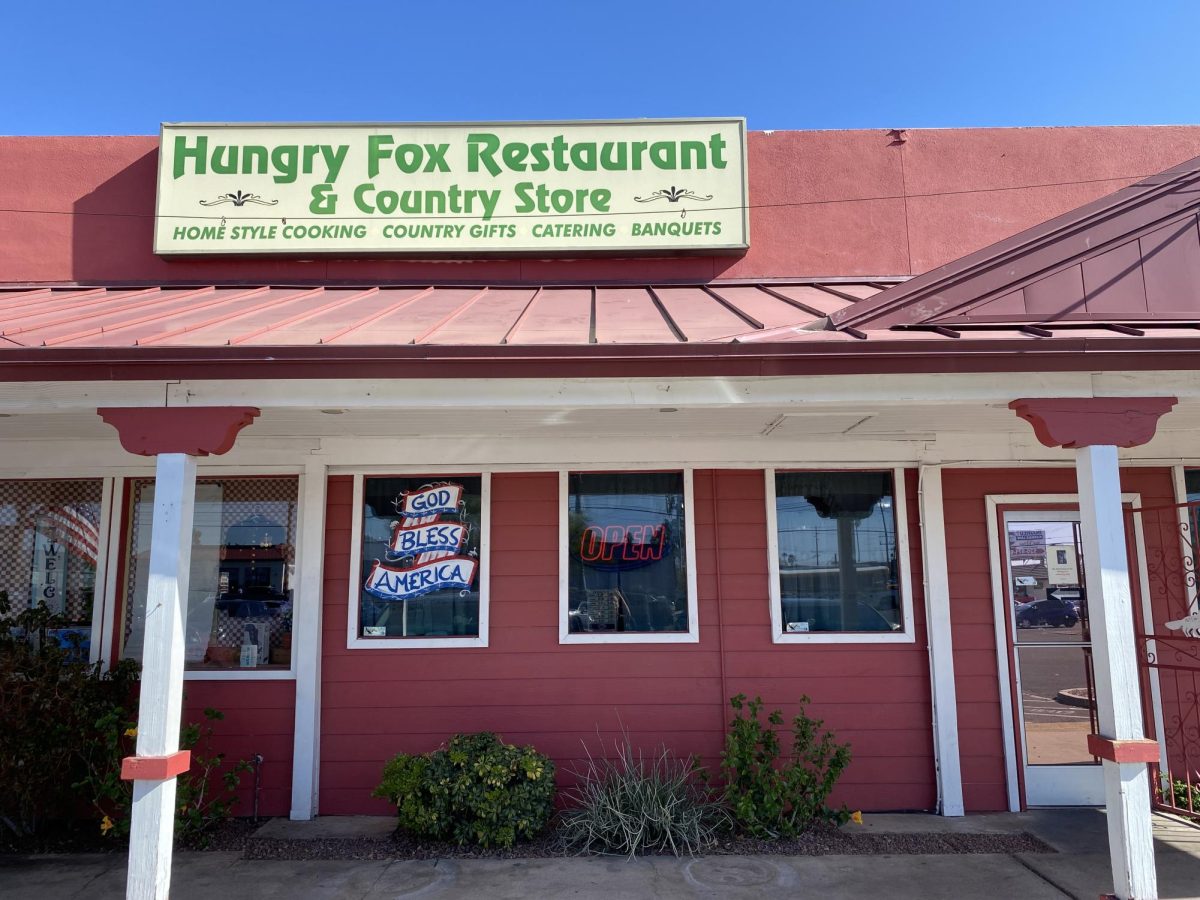
“Necesito dos hot dogs, pero sin mayonesa,” Marisela Romero said as she ordered another hot dog in the yellow bus turned eatery.
Inside the Chuyito’s Hot Dogs bus in Rio Rico, about 10 miles north of the U.S.-Mexico border in a Chevron parking lot, employee Romero tapped on the window that separates the seating area from the kitchen to get chef Martin Lopez’s attention.
She formed a “v” with her left hand and pressed it against the window.
“Con chilies?” Lopez asked in his soft-spoken tone.
“Si,” Romero responded as she pulled her arms to her side to squeeze by a customer in the cramped bus-gone-canteen that specializes in the Sonoran hot dog.
The blue, red and yellow bus, which looks like it may have transported schoolchildren in its previous life, is gutted and has room for a small kitchen and four seating booths.
If the inside seats fill up, there are a few tables and chairs set up in front of the bus, too.
All of the workers in Chuyito’s speak Spanish only.
The American hot dog is bare, which distinguishes it from the bacon-shrouded Sonoran dog, Lopez explained.
But bacon isn’t the only added ingredient. The full shebang touts beans, tomatoes, mayonnaise, cheese, avocado, vinegar-soaked jalapeños and two types of onions, fresh and grilled.
Although Chuyito’s will prepare a hot dog to a customer’s liking, either bare or lathered, Lopez said most people get the works.
“They’re $3 with everything on it, or with nothing,” he added.
The Sonoran staple is making a national name for itself lately, thanks to numerous articles and TV spots “discovering” what has been common along the border and in Southern Arizona for years. Two Travel Channel specials and a New York Times article didn’t hurt.
Lopez, who has worked at Chuyito’s for two years, said the Sonoran hot dog business is flourishing, although he’s not sure if that’s a result of the dog’s newfound role in the media spotlight.
“Before there wasn’t competition and now there is,” he said.
Plenty of carts and buses selling bacon-wrapped hot dogs have popped up all around Tucson and in much of Southern Arizona of late, but their roots are in Sonora.
Just last week, as city clean-up crews began to sweep up the confetti and noisemakers that lined the streets of Nogales, Sonora, after its bicentennial celebration, Manuel Martinez brushed breadcrumbs off of his hot dog cart and onto the floor.
Martinez manned the hot dog cart at Calle Campillo and Calle Benito Juárez during the festivities.
As he tidied up, his sister-in-law walked up and asked him about the night’s sales.
“We sold a lot, thank God,” Martinez said in Spanish. “I only have two hamburgers left. Everything’s out. There’s no more.”
Martinez said locals and visitors gobble up the dogs.
“When tourists come, they say they prefer the Sonoran dog,” Martinez said.

Rio Rican Fabian Rios stopped by Chuyito’s one night recently.
When asked how he thought American hot dogs size up to their Sonoran counterparts, Rios took a step back, dropped his hands at his sides, tilted his head to the heavens and let out a big-hearted laugh.
“Oh, please, the American one doesn’t have anything,” Rios said in Spanish. “Americans may have invented the hot dog, but Mexicans made it better.”
A few booths behind Rios, a boy suited up in his Rio Rico High School cross-country jersey chowed down on a decked-out dog.
He said he agrees that Sonoran dogs are “way better.”
Kelly Janowski lives in Chicago’s suburbs and works for a non-profit organization, but she also maintains a food blog called “Kelly the Culinarian,” where she has posted about Sonoran dogs.
Janowski first tried the Mexican treat at what she called a “real local, hole-in-the-wall kind of place” during a summer internship in Tucson a few years back.
Even though she said she misses the hot dogs now, she admits to an initial leeriness.
“The way they described it sounded kind of off-putting,” Janowski said. “A fried hot dog with bacon and mayonnaise? I thought, ‘how can this possibly be edible?'”
But as she savored her first Sonoran dog, she realized it was more than edible. “It’s delicious,” she said.
Back in the bus, Lopez scooped runoff grease onto a shining spatula and redrizzled it over a mixture of onions and mustard.
Janowski said the dog’s supposed to be greasy. “It was certainly a sometimes food,” she added. “I’m sure it passed my caloric intake for the entire day.”‘










